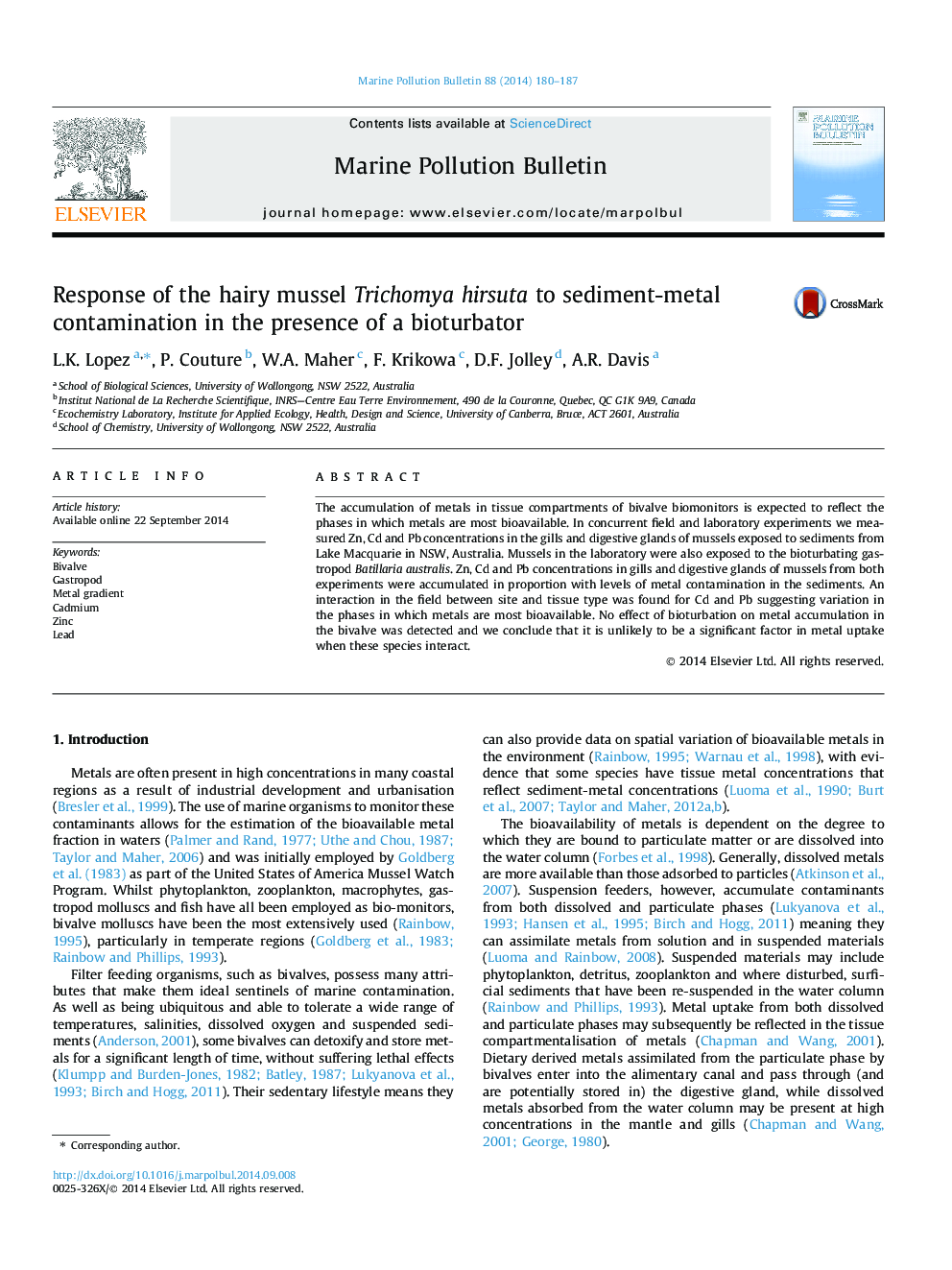| Article ID | Journal | Published Year | Pages | File Type |
|---|---|---|---|---|
| 6358276 | Marine Pollution Bulletin | 2014 | 8 Pages |
Abstract
The accumulation of metals in tissue compartments of bivalve biomonitors is expected to reflect the phases in which metals are most bioavailable. In concurrent field and laboratory experiments we measured Zn, Cd and Pb concentrations in the gills and digestive glands of mussels exposed to sediments from Lake Macquarie in NSW, Australia. Mussels in the laboratory were also exposed to the bioturbating gastropod Batillaria australis. Zn, Cd and Pb concentrations in gills and digestive glands of mussels from both experiments were accumulated in proportion with levels of metal contamination in the sediments. An interaction in the field between site and tissue type was found for Cd and Pb suggesting variation in the phases in which metals are most bioavailable. No effect of bioturbation on metal accumulation in the bivalve was detected and we conclude that it is unlikely to be a significant factor in metal uptake when these species interact.
Related Topics
Physical Sciences and Engineering
Earth and Planetary Sciences
Oceanography
Authors
L.K. Lopez, P. Couture, W.A. Maher, F. Krikowa, D.F. Jolley, A.R. Davis,
